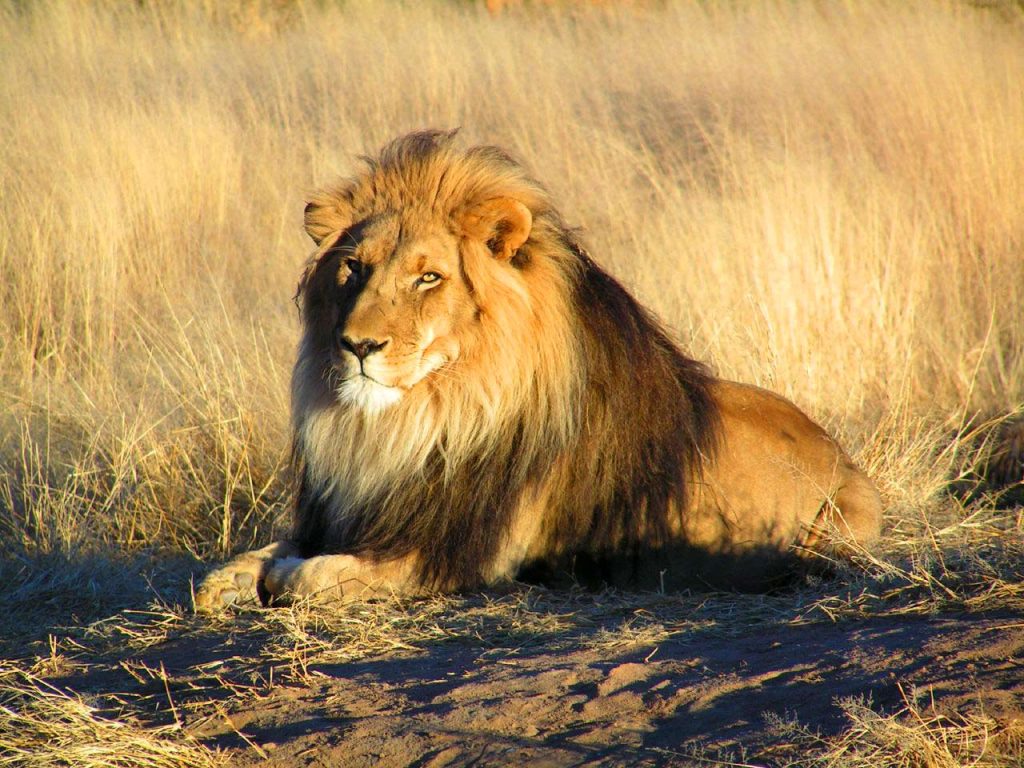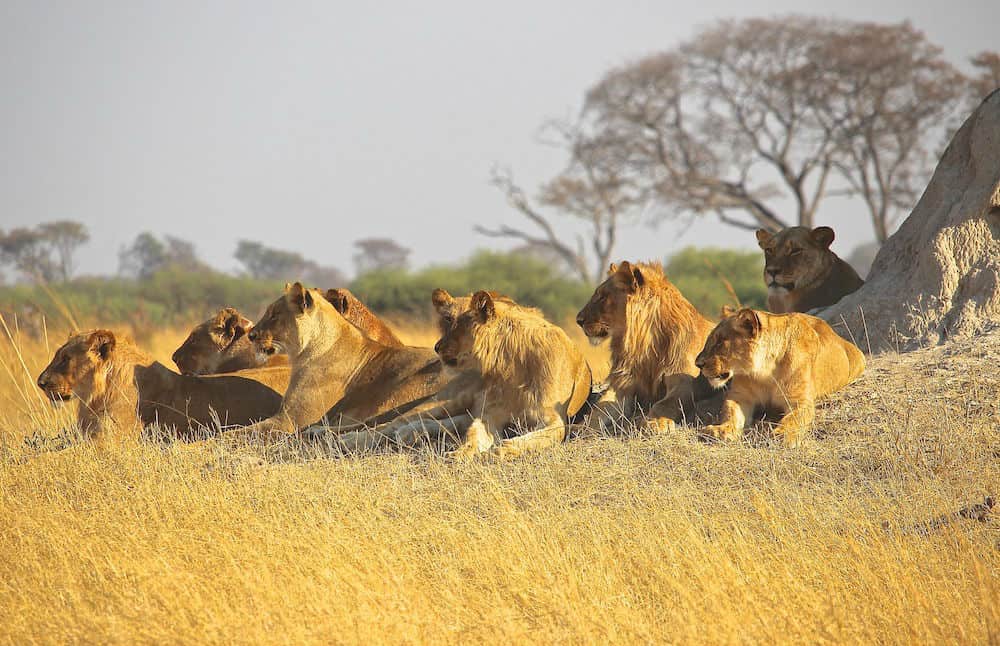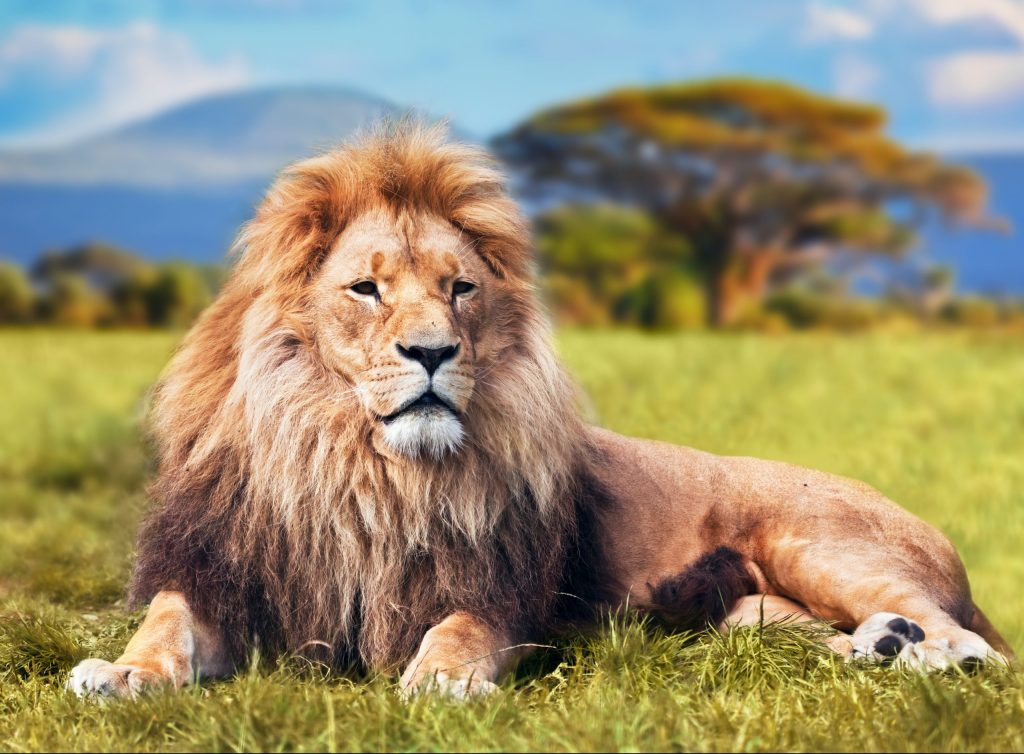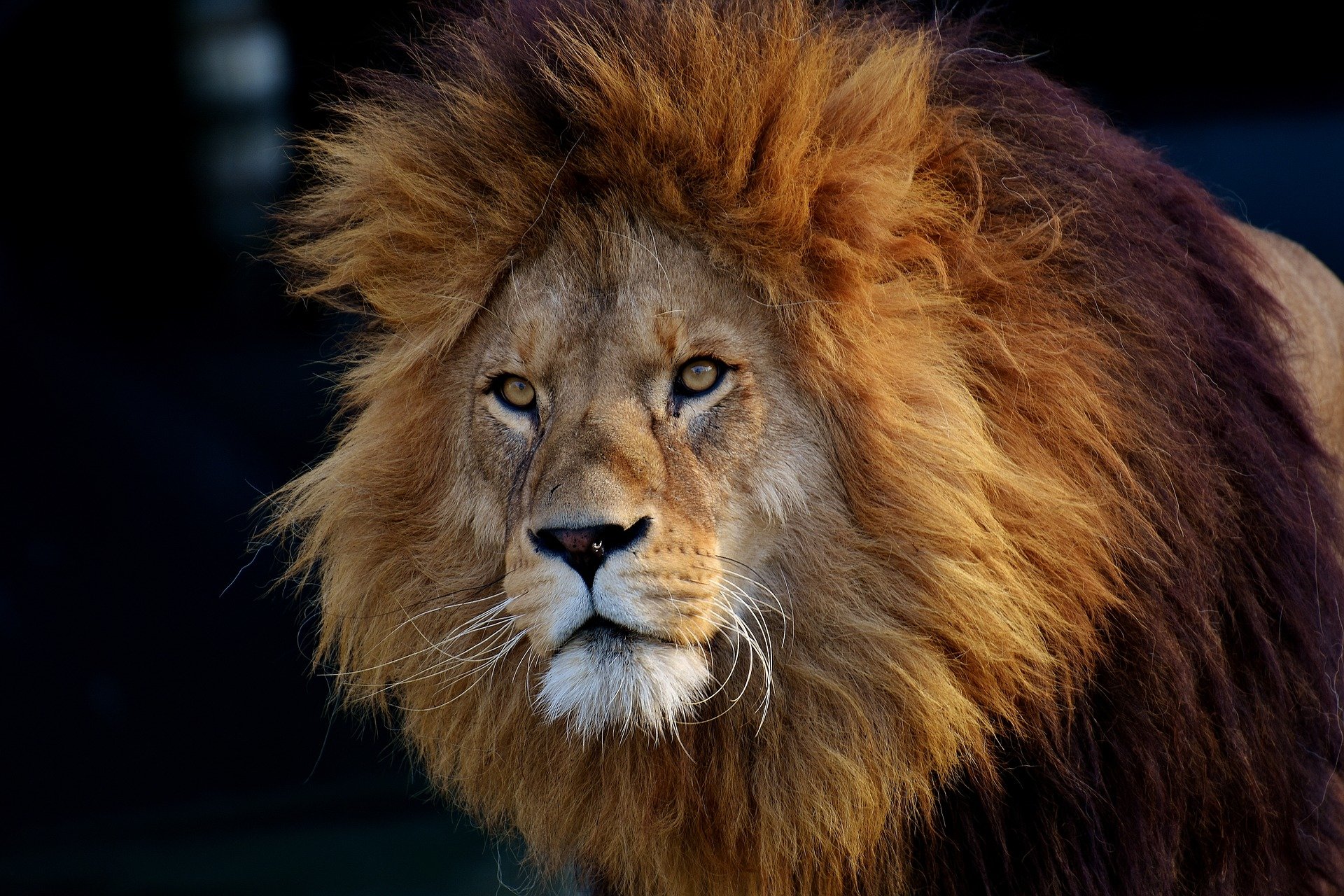So you’re into all things wild and wonderful, especially when it comes to the majestic king of the savannah – the lion. Well, prepare to be captivated by the fascinating world of lion DNA and genetic research. In this article, we’ll explore the latest updates in the ever-evolving field of lion genetics and how it’s reshaping our understanding of these mighty creatures. From unravelling their family tree to unlocking the secrets behind their incredible adaptations, join us as we step into the realm of lion DNA and discover the untold stories hidden within their genetic code.
What is Lion DNA?
Lion DNA refers to the genetic material found within lions, which contains the instructions for their physical characteristics, behavior, and overall biology. DNA, or deoxyribonucleic acid, is a molecule that exists in every living organism. It is made up of a unique sequence of nucleotides, which are the building blocks of DNA. This genetic makeup determines the traits and features of lions, such as their manes, size, and hunting abilities.
Lion Genetic Makeup
The genetic makeup of lions is fascinating and diverse. Lions belong to the Panthera genus, which also includes tigers, leopards, and jaguars. Within the lion species, there are two main subspecies: African lions (Panthera leo leo) and Asiatic lions (Panthera leo persica). These subspecies have distinct genetic characteristics that differentiate them from one another.
The DNA of African lions is generally more diverse than that of Asiatic lions. This diversity can be attributed to the larger population size and geographic range of African lions. In contrast, Asiatic lions have a smaller population confined to the Gir Forest in India. Understanding the genetic makeup of lions is crucial for conservation efforts and preserving the unique characteristics of each subspecies.

Importance of studying Lion DNA
Studying lion DNA is of utmost importance for several reasons. Firstly, it allows us to gain a deeper understanding of their evolutionary history and genetic adaptations. By analyzing the genetic material of lions, scientists can unravel the intricate details of how these magnificent creatures have evolved over time and adapted to their environments.
Additionally, studying lion DNA is crucial for identifying and preserving genetic diversity within lion populations. Genetic diversity is essential for the long-term survival and health of a species. By assessing the genetic makeup of lions, conservationists can identify populations that may be at risk of inbreeding or facing a loss of genetic diversity. This knowledge guides conservation strategies to help maintain healthy and resilient lion populations.
Furthermore, lion DNA analysis has significant implications for addressing human-lion interactions and conflicts. By understanding the genetic factors that influence lion behavior, scientists and conservationists can develop more effective strategies to mitigate human-lion conflicts and promote coexistence.
Methods of DNA analysis
DNA analysis involves various techniques and methods to examine and understand the genetic makeup of organisms. In the case of lions, researchers mainly utilize two methods: microsatellite analysis and mitochondrial DNA analysis.
Microsatellite analysis involves examining specific regions of the lion’s DNA that contain repeated sequences of nucleotides. By comparing these repeated sequences across individuals, scientists can determine genetic relatedness and assess patterns of genetic diversity within populations.
Mitochondrial DNA analysis focuses on the DNA found within mitochondria, which are tiny structures within cells that produce energy. This type of DNA is passed down from the mother to her offspring. By analyzing mitochondrial DNA, researchers can study maternal lineages and track the evolutionary history of lion populations.
These DNA analysis methods provide valuable insights into the genetic structure, relatedness, and diversity of lion populations, ultimately aiding conservation efforts and our understanding of these majestic animals.

Current State of Lion Genetic Research
DNA studies on African lions
Over the past few decades, significant progress has been made in studying the DNA of African lions. Researchers have conducted genetic analyses on populations across different regions of Africa, revealing important insights into the genetic structure and diversity of African lion populations.
One key finding is that African lions display a distinct population structure, with genetic differences between populations from different regions. This knowledge helps conservationists identify important areas for preserving genetic diversity and implementing targeted conservation strategies.
Moreover, researchers have used DNA analysis to study the migration patterns and historical connectivity between lion populations. This information allows scientists to trace the historical colonization and expansion of lion populations across Africa, providing critical insights into their evolutionary history.
DNA studies on Asiatic lions
Although fewer in number, DNA studies on Asiatic lions have also been conducted. The Gir Forest in India is the last remaining habitat of these lions, and genetic research has shed light on the unique characteristics and genetic makeup of this population.
By analyzing molecular markers in Asiatic lion DNA, scientists have discovered that this population has low genetic diversity, making it susceptible to inbreeding and genetic disorders. This finding underscores the importance of conserving and managing this endangered subspecies to ensure its long-term survival.
Comparative analysis of lion populations
Comparative analysis of lion populations from different regions and subspecies has provided valuable insights into their genetic differences and similarities. By comparing the DNA of African and Asiatic lions, researchers have identified unique genetic markers that distinguish these subspecies.
Additionally, comparing lion populations from different regions within Africa has highlighted the genetic diversity within the continent. These studies also reveal patterns of gene flow and migration, helping in the development of targeted conservation strategies to maintain genetic diversity and connectivity between lion populations.
The current state of lion genetic research showcases the power of DNA analysis in unraveling the complexities of lion populations, informing conservation efforts, and providing a foundation for future studies.
Implications for Conservation
Conservation genetics of lions
Conservation genetics focuses on the genetic management of endangered species and understanding the genetic factors that contribute to their viability and long-term survival. In the case of lions, conservation genetics plays a crucial role in developing effective strategies to conserve and manage these iconic animals.
By analyzing lion DNA, scientists can identify populations with low genetic diversity, high levels of inbreeding, or potential genetic disorders. This information helps conservationists prioritize and implement targeted interventions to improve the genetic health of lion populations.
Additionally, conservation genetics enables the identification of key habitats and corridors that are vital for maintaining genetic connectivity between lion populations. Protecting these areas ensures that lions can move freely and interbreed, preventing the negative effects of genetic isolation and promoting the long-term survival of the species.
Genetic diversity and inbreeding in lion populations
Genetic diversity is essential for the survival and adaptability of a species. It allows populations to withstand environmental changes, adapt to new conditions, and maintain overall health. Lions, like many other large carnivores, face challenges related to genetic diversity due to habitat loss, fragmentation, and human-induced factors.
By studying lion DNA, researchers can assess the levels of genetic diversity within populations and identify those with low genetic variation. Low genetic diversity increases the risk of inbreeding, genetic disorders, and reduced reproductive success. Conservation efforts targeted at these populations can help mitigate these effects and ensure the long-term survival of the species.
Conservation strategies informed by genetic research
Genetic research on lions provides valuable information that can inform and shape conservation strategies. By identifying genetically unique populations or subspecies, conservationists can prioritize their protection and implement measures to maintain genetic diversity.
Furthermore, understanding the genetic factors that influence lion behavior can help develop effective strategies for mitigating human-lion conflicts. By using genetic analysis to identify individuals or populations with specific behavioral traits, conservationists can implement targeted management approaches to reduce conflicts and promote coexistence.
Genetic research not only enhances our understanding of lions but also provides practical tools and knowledge to guide conservation efforts and ensure the long-term survival of these majestic creatures.

Genetic Adaptations and Evolution
Genetic basis of lion adaptations
Lions have evolved a set of unique adaptations that enable them to thrive in their habitats and fulfill their roles as apex predators. Genetic research has helped uncover the underlying genetic basis of these adaptations, shedding light on how lions have evolved and adapted over time.
One of the most notable genetic adaptations in lions is the development of the manes in males. Research has shown that the development of manes is influenced by a specific set of genes that regulate the growth of hair and the production of manes. Understanding these genetic mechanisms helps us comprehend the evolutionary significance of the manes and their role in lion behavior.
Other genetic adaptations in lions include traits related to hunting prowess, camouflage, and social behavior. By studying the genetic basis of these adaptations, scientists can gain insights into how lions have evolved to survive in their environments and interact with other members of their species.
Evolution of lions and its genetic underpinnings
The evolutionary history of lions spans millions of years, with fascinating genetic changes shaping their present-day characteristics. Genetic research has allowed scientists to reconstruct the evolutionary tree of lions, uncovering their relationships with other big cat species and their ancestral lineages.
By comparing the DNA of lions with that of other big cats, researchers have identified common genetic markers and shared ancestry. These insights have helped refine our understanding of the evolutionary relationships between lion subspecies and their divergence from common ancestors.
Furthermore, genetic research has shed light on the historical expansion and contraction of lion populations in response to shifting environmental conditions and changes in prey availability. By studying the genetic signatures left behind in lion DNA, scientists can piece together the puzzle of their evolutionary journey and the factors that have shaped their genetic diversity today.
Insights into ancient lion populations
Ancient DNA analysis is a powerful tool that allows scientists to extract and analyze genetic material from preserved lion remains, such as bones or teeth. This type of analysis provides a unique window into the past and offers insights into ancient lion populations that have long vanished.
By extracting DNA from ancient lion specimens, researchers can uncover valuable information about the genetic diversity, geographic distribution, and evolutionary history of ancestral lion populations. This knowledge bridges the gap between past and present, allowing us to understand how lion populations have changed over time and adapt our conservation strategies accordingly.
Studying ancient lion populations through genetic analysis provides a glimpse into the genetic legacy of extinct species, contributing to our understanding of not only lions but also the broader ecosystem dynamics of the past.
Human-Lion Interactions: A Genetic Perspective
Lion-human conflict
Human-lion conflict arises when the interests and activities of humans come into direct conflict with the well-being and conservation of lions. These conflicts are often driven by factors such as habitat encroachment, livestock predation, and perceived threats to human safety.
Genetic research plays a crucial role in understanding the factors underlying lion-human conflict. By studying lion DNA, scientists can investigate the genetic basis of behaviors that may contribute to conflict, such as aggressive tendencies or willingness to prey on livestock. This knowledge allows for the development of targeted strategies to mitigate conflict and promote coexistence.
Human activities influencing lion genetics
Human activities have a significant impact on lion populations and can influence their genetic makeup. Factors such as habitat loss, fragmentation, and poaching can disrupt gene flow between lion populations, leading to genetic isolation and reduced genetic diversity.
Additionally, human activities often result in the fragmentation of lion habitats, which can restrict the movement of individuals and increase the risk of genetic bottlenecks. These bottlenecks occur when a small number of individuals become isolated, reducing genetic diversity and increasing the likelihood of inbreeding.
By understanding how human activities impact lion genetics, scientists and conservationists can work towards minimizing these negative effects and maintaining healthy and resilient lion populations.
Genetic analysis to address human-lion interactions
Genetic analysis is a powerful tool that can be used to address human-lion interactions and conflicts. By studying the genetic structure of lion populations in areas of conflict, researchers can identify specific individuals or groups that may be more prone to engaging in conflict behaviors.
This information allows for the implementation of targeted management strategies, such as translocating problem individuals or groups to areas where conflicts are less likely to occur. Genetic analysis also enables the identification of areas where human-lion conflicts are more prevalent, facilitating the development of proactive measures to prevent conflicts from escalating.
Genetic research provides a unique perspective on human-lion interactions, helping to inform strategies that prioritize both the conservation of lions and the well-being of human communities.

Applications of Lion DNA Research
Forensic analysis for poaching cases
Poaching remains a significant threat to lion populations, driven by the illegal trade in lion parts and the continuous demand for trophies. Genetic research plays a crucial role in forensic analysis for poaching cases, helping to identify the origin of seized lion parts and track the illegal trade routes.
By analyzing the DNA of confiscated lion products, scientists can determine the geographic origin of the lions and match the DNA profiles to known populations. This information is invaluable in identifying poaching hotspots, exposing illegal trade networks, and aiding law enforcement efforts to combat wildlife crime.
Genetic identification of individual lions
Genetic identification techniques allow for the individual identification of lions based on their unique DNA profiles. By collecting DNA samples from lion scat, hair, or saliva, researchers can determine the identity of specific individuals within a population.
This information is invaluable for assessing population sizes, monitoring individuals over time, and understanding social dynamics within lion groups. Genetic identification also aids in estimating the abundance and distribution of lions in different habitats, providing crucial data for conservation planning and management.
Understanding lion behavior through genetics
Genetic analysis can provide important insights into the genetic basis of lion behavior. By linking specific genetic markers or variations to particular behavioral traits, scientists can gain a deeper understanding of the factors that influence social structure, aggression, hunting strategies, and other behavioral characteristics in lions.
This knowledge can inform conservation strategies aimed at reducing human-lion conflicts, promoting sustainable tourism practices, and improving the overall well-being of lion populations.
The applications of lion DNA research are vast, ranging from combating poaching to understanding the intricate details of lion behavior. By harnessing the power of genetics, we can unlock a wealth of knowledge that can be used to protect and conserve these remarkable creatures.
Challenges and Future Directions
Technical challenges in lion DNA research
Despite the significant advancements in DNA analysis techniques, studying lion genetics still poses certain technical challenges. Obtaining DNA samples from lions can be logistically demanding, as it often requires close proximity or tranquilization of individuals to collect suitable samples.
Furthermore, analyzing the large and complex genomes of lions can be computationally intensive and require cutting-edge technology. Overcoming these technical challenges will require continued investments in research and the development of innovative methods to improve sampling and analysis techniques.
Expanding genetic studies to more lion populations
While genetic research on lions has made significant progress, there is still much to learn. Current studies primarily focus on African and Asiatic lion populations, leaving gaps in our knowledge regarding other lion subspecies and regional populations.
Expanding genetic studies to more lion populations across their entire range is crucial for obtaining a comprehensive understanding of their genetic diversity and evolutionary history. This will involve collaboration between scientists, conservation organizations, and local communities to ensure the collection of representative DNA samples from a wide range of lion populations.
Incorporating genetic research into conservation plans
To maximize the impact of genetic research on lion conservation, it is essential to bridge the gap between scientific knowledge and conservation planning. The findings from genetic studies should be effectively communicated to policymakers, conservationists, and local communities to inform decision-making and action.
By integrating genetic research into conservation plans, we can develop more targeted and effective strategies to protect and manage lion populations. This integration requires interdisciplinary collaboration among geneticists, ecologists, conservationists, and policymakers, ensuring that genetic knowledge is translated into tangible conservation actions.

Ethical Considerations in Lion Genetic Research
Ethics of genetic research on endangered species
Genetic research on endangered species, including lions, raises ethical considerations that need to be carefully addressed. Researchers must ensure that their work is conducted in a manner that minimizes harm to individuals and populations.
The collection of DNA samples from lions should prioritize animal welfare, ensuring that the methods used are minimally invasive and do not cause undue stress or harm. This may involve non-invasive sampling techniques such as collecting hair or scat samples rather than invasive procedures.
Furthermore, the sharing of genetic data should be done in a manner that respects the rights and consent of local communities and stakeholders. Open and transparent communication is essential in building trust and fostering collaborative efforts that benefit both lion conservation and local communities.
Balancing conservation needs and animal welfare
A critical ethical consideration in lion genetic research is the balance between conservation needs and animal welfare. While genetic research provides valuable insights into lion populations, it should be conducted with a deep respect for the well-being and rights of individual animals.
Conservation actions informed by genetic research should prioritize strategies that minimize harm to lions and promote their long-term welfare. This may involve careful population management, habitat restoration, and targeted efforts to mitigate human-lion conflicts.
Balancing conservation needs and animal welfare requires an ethical framework that prioritizes the well-being of lions while also working towards their long-term survival and conservation.
Transparency and accountability in genetic studies
Transparency and accountability are crucial in genetic research on lions. Researchers must make efforts to ensure that their studies are conducted with integrity and that the results are communicated openly and accurately.
This includes providing sufficient detail about research methods, sample collection procedures, and data analysis techniques. Transparent reporting of findings allows for peer review, replication, and verification of results.
Additionally, accountability should extend to the ethical treatment of animals involved in genetic research. Researchers should adhere to ethical guidelines and practices, ensuring the welfare of individual animals during sample collection and research procedures.
Transparency and accountability build trust within the scientific community and among stakeholders, which is essential for the responsible conduct and application of genetic research in lion conservation.
Collaborative Efforts in Lion Genetics
International research collaborations
Lion genetic research requires collaborative efforts among scientists, conservation organizations, and governmental agencies. International research collaborations bring together experts from different regions and institutions, pooling their knowledge and resources for a collective understanding of lion genetics.
These collaborations facilitate the sharing of data, methodologies, and expertise, ensuring that genetic research on lions is comprehensive and representative of their entire range. By working together, researchers can overcome logistical challenges, share insights, and develop a more holistic understanding of lion genetics.
Collaboration between scientists and conservationists
Effective conservation of lions depends on close collaboration between scientists and conservation practitioners. Genetic research provides valuable insights into lion populations, and this information must be translated into on-the-ground conservation actions.
Collaboration between scientists and conservationists allows for the integration of genetic research into conservation strategies. By combining genetic knowledge with ecological and behavioral studies, conservation practitioners can develop targeted approaches that address the specific needs and challenges of lion populations.
This collaboration also helps bridge the gap between scientific research and conservation practice, ensuring that genetic findings are effectively communicated and utilized for practical and impactful conservation efforts.
Sharing genetic data for broader research
Sharing genetic data is essential for advancing lion genetics research and fostering broader scientific exploration. Open-access data repositories allow researchers from around the world to access and use existing genetic data to address research questions and enhance their understanding of lion populations.
By sharing genetic data, researchers can contribute to a growing body of knowledge and avoid duplication of effort. This collaborative approach promotes transparency, facilitates cross-study comparisons, and maximizes the knowledge gained from genetic research.
Sharing genetic data also enables the development of more accurate and comprehensive genetic models, addressing questions that extend beyond the scope of individual studies and providing a foundation for future research.
Conclusion
Lion DNA and genetic research offer valuable insights into the genetic makeup, adaptations, behavior, and evolutionary history of these majestic animals. By studying lion genetics, researchers can contribute to the conservation of lion populations and inform strategies that ensure their long-term survival.
From the importance of genetic diversity to the challenges and future directions of lion genetic research, it is clear that this field of study has immense potential to shape conservation efforts. Through collaborative efforts, innovative research methods, and ethical considerations, lion genetics research can provide a solid foundation for comprehensive conservation plans and contribute to the continued existence of these iconic creatures in the wild.

